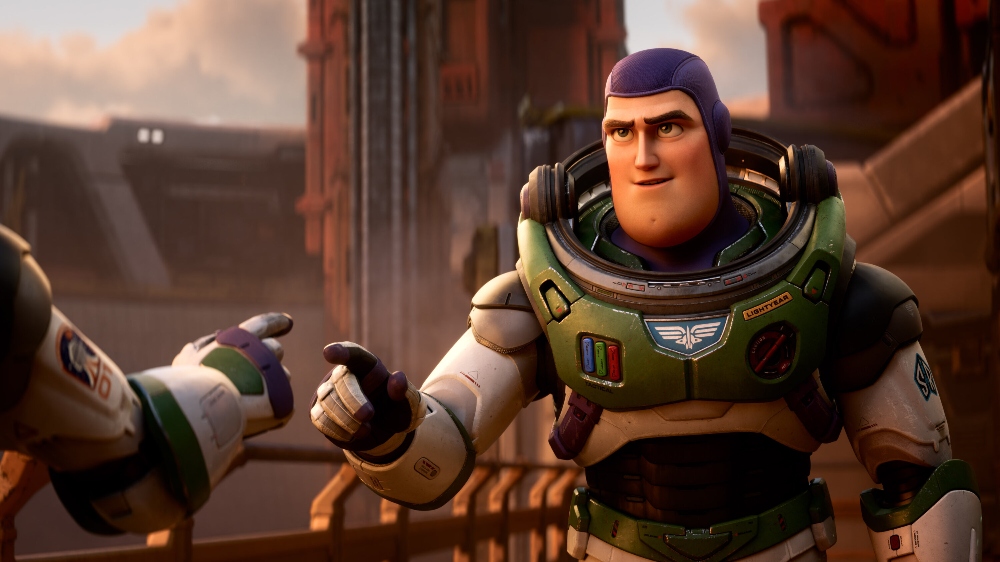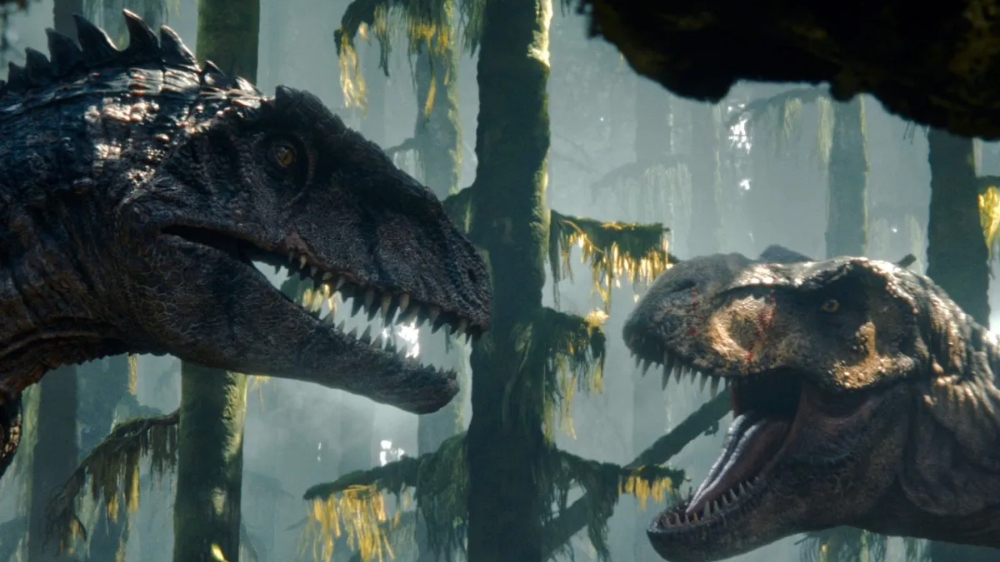
I think we were all surprised to see the box office results from this past weekend, wherein the lousy third installment of the second Jurassic trilogy beat out a very good Pixar movie that featured the voice of one of the most beloved stars on the planet.
However, the fact that Jurassic World Dominion somehow outdrew Lightyear says much more about moviegoers these days than it does about the movies themselves, and since my job is to make sense of both, I’m going to attempt just that over the next thousand or so words.
A couple of months ago, I pointed out that the reason we’re getting such lowest common denominator garbage at the multiplex is because of you, the American moviegoing public. The fact that you continue to show up for lazy dreck like Morbius, Uncharted, and Sonic the Hedgehog 2 means that the studios are going to continue to give you those kinds of movies. Why wouldn’t they? Jurassic World Dominion (which I’ll refer to as JWD from here on out) is the latest entry on this ignominious list thanks to its lackluster predecessors, which you made wildly successful because you enjoy seeing CGI dinosaurs on the big screen and don’t really care about little things such as screenwriting and performance.
Now, Lightyear may not live up to its own predecessors — the four Toy Story movies — but it’s still a damn good movie that boasts a strong voice performance by Chris Evans and hails from a company almost exclusively known for the quality of its animated content. That the film took in less money over the course of its opening weekend than the 147 minutes of idiocy that is JWD is Exhibit A in my argument, and should be cause for concern in certain corners of the industry.

I understand that the things we used to be able to count on — that certain movies from certain studios would perform a certain way — are no longer a given. People went a little bananas over the winter when Pixar announced that Turning Red would bypass theaters and debut directly on Disney+, alleging it was a racist and misogynistic decision made because the movie was focused on a young Asian girl and menstruation. The studio argued that it was simply a business decision, as it remained focused on building up its Disney+ streaming service and sensed that parents were still reluctant to take their young children to theaters. Now, it sort of feels like maybe Pixar knew something we didn’t, and avoided what might have been a somewhat embarrassing showing at the box office earlier this year.
Obviously, the same can’t be said with regard to Lightyear because everyone — including me, to be honest — believed it would be a huge success and likely wind up as one of the summer’s biggest movies. That the film only opened to $51 million at the domestic box office makes us forecasters look silly, even if its worldwide numbers will almost certainly make Lightyear a highly profitable entry in the Pixar canon. Still, its underperformance stateside forces us to ask a reasonable question: what the hell do audiences want right now?
Well, for starters, we know they can’t get enough of Tom Cruise and Top Gun: Maverick, which has done remarkably well, especially when you consider the fact that the original was released 36 years ago. Cruise is only part of the reason for the sequel’s success, just like the success of The Batman is only partially due to the fact that it’s, you know, a Batman movie. People were excited about those movies because they’d heard how good each of them was from both critics and fellow audiences alike, and so they flocked to the theater to see them. If Warner Bros. hadn’t been in such a rush to get The Batman on HBO Max, maybe that film would’ve approached the billion-dollar mark, just as Top Gun is now. These two films represent the best that the studio system has to offer these days, and the box office performance of each serves as proof that word of mouth generated by a quality movie still matters.

And yet, maybe it doesn’t matter enough. Maybe spectacle is worth more than word of mouth, especially since we’re still in the process of crawling out of our respective caves following two years of isolation, and spectacle isn’t just what many people crave, it’s the only thing that will convince them to leave their homes. I would think that Lightyear would qualify as spectacle, especially in light of the story it’s telling, but apparently, the nostalgia-fueled combination of dinosaurs and Jeff Goldblum is a better example.
I honestly think that the success of JWD is going to end up meaning more than the success of either Top Gun or The Batman, because Hollywood will inevitably take the wrong lessons from it and reinforce those lessons. Had JWD flopped, executives might have actually been forced to stop and reassess their creative strategies and maybe emphasize a return to quality storytelling rather than settle for putting a bunch of cool stuff up on screen and expecting marketing to do the rest. It could have been a turning point for the entire industry.
But after the success of a lazy sequel like JWD and the failure to launch Lightyear, a sequel that actually dares to do something different? Forget it. Prepare for more mindless crap. And there’s nothing anyone is going to be able to do about it, because we all had a chance to make a statement, vote with our wallets, and change the situation, and we blew it, just as we did earlier this year when the fabulous film The Northman came and went with little fanfare.
It’s great that Hollywood is still able to make quality blockbusters like The Batman and Top Gun: Maverick, but so long as audiences continue to show up for movies like JWD, the industry has little incentive to focus on preparing a quality meal since most people will eat whatever is put in front of them.
 Neil Turitz is a journalist, essayist, author, and filmmaker who has worked in and written about Hollywood for nearly 25 years, though he has never lived there. These days, he splits his time between New York City and the Berkshires. He’s not on Twitter, but you can find him on Instagram @6wordreviews.
Neil Turitz is a journalist, essayist, author, and filmmaker who has worked in and written about Hollywood for nearly 25 years, though he has never lived there. These days, he splits his time between New York City and the Berkshires. He’s not on Twitter, but you can find him on Instagram @6wordreviews.
You can read a new installation of The Accidental Turitz every Wednesday, and all previous columns can be found here.





